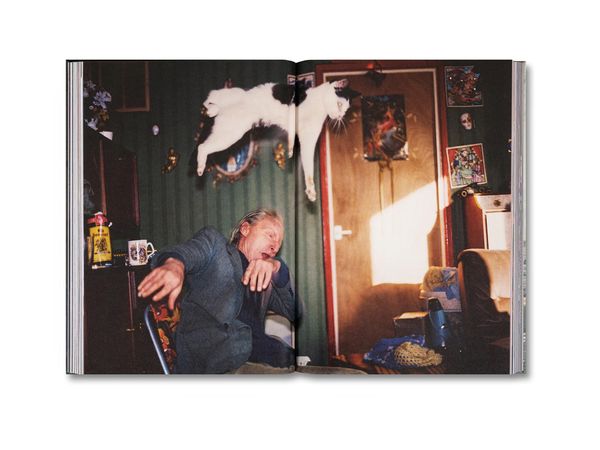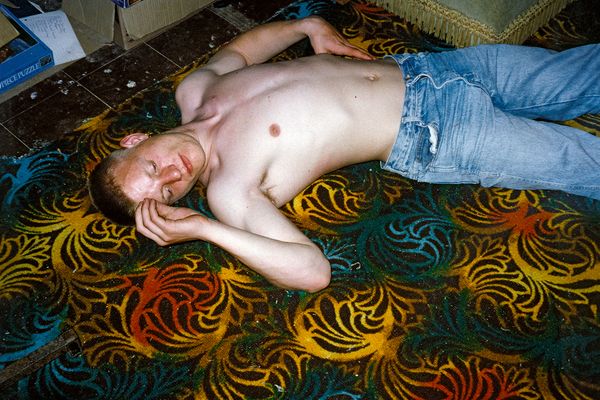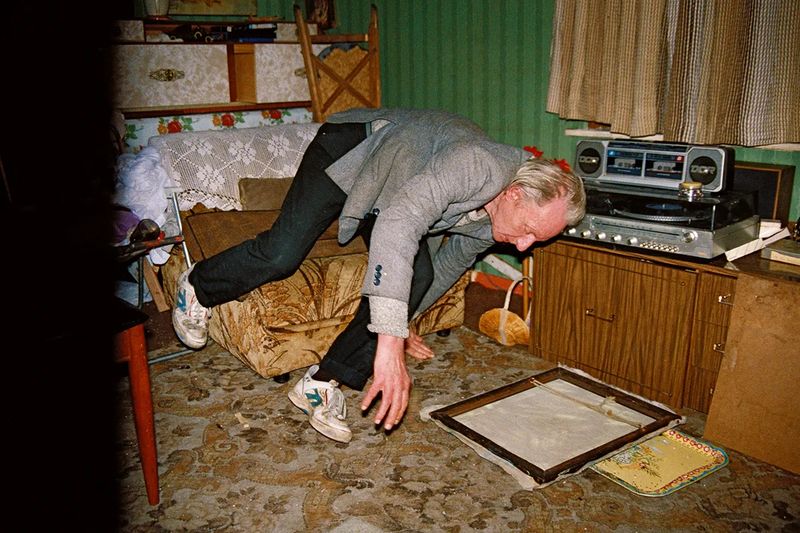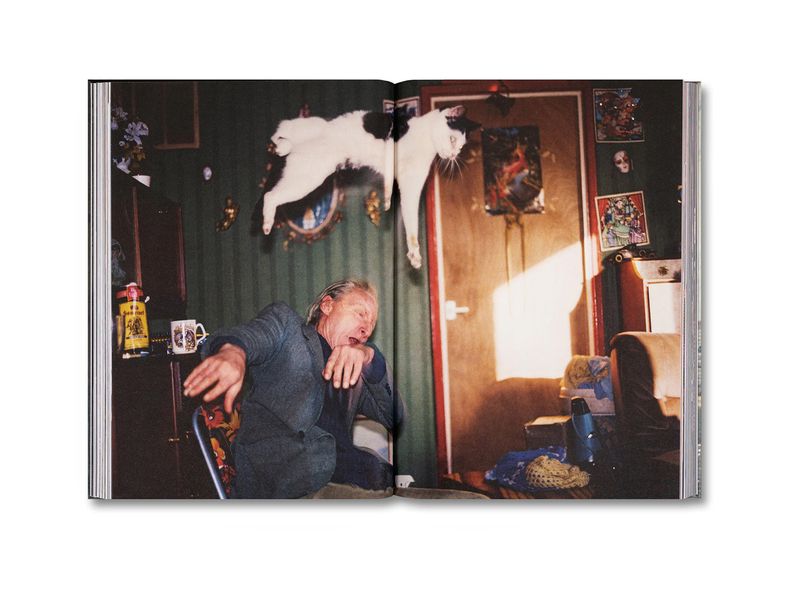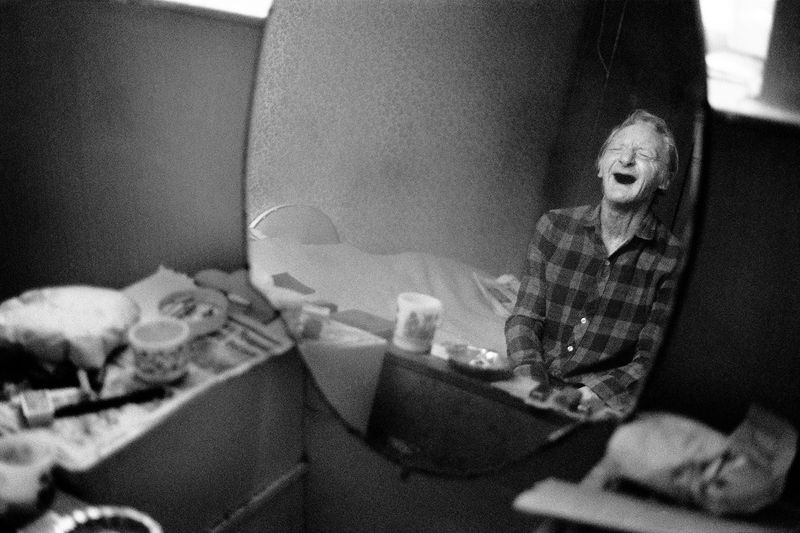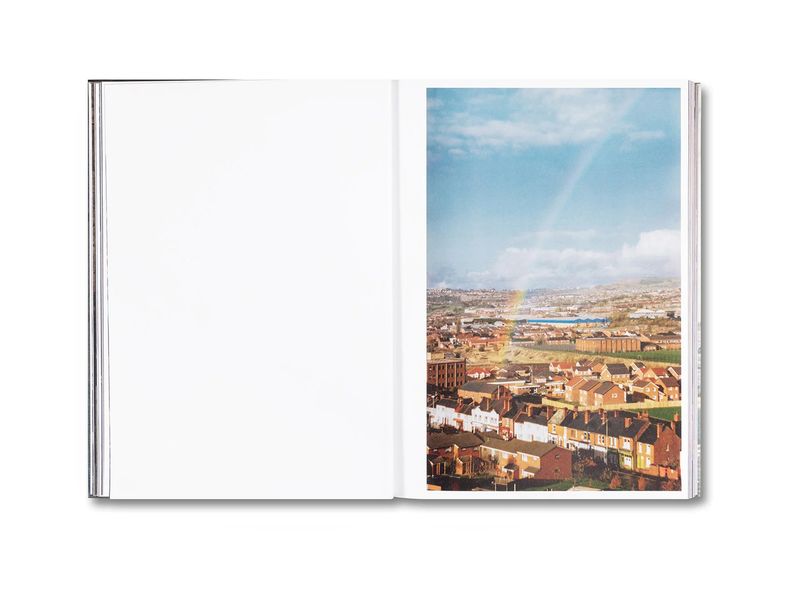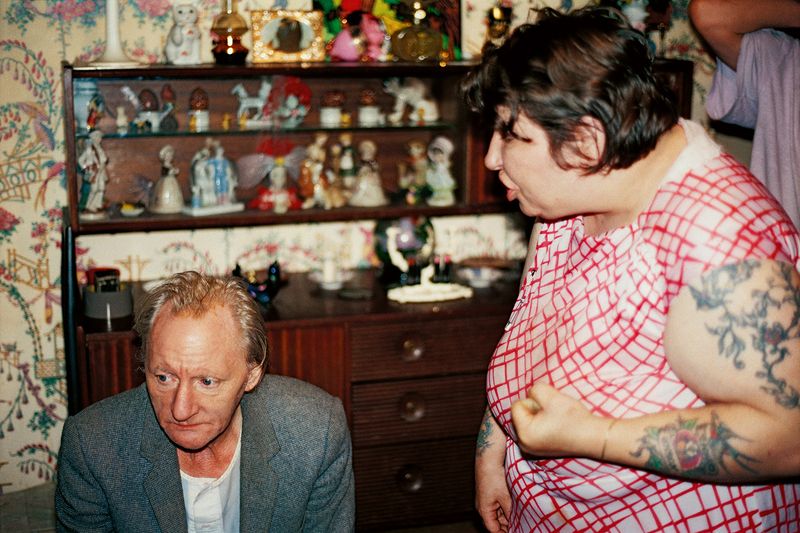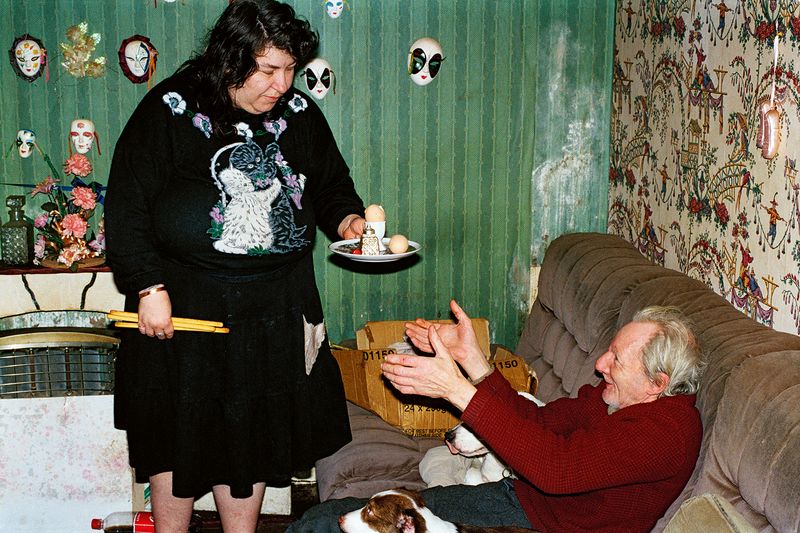Photobook Review: Ray’s a Laugh by Richard Billingham
-
Published27 Mar 2024
-
Author
- Topics Photobooks
In 1996, Scalo Press published Ray’s a Laugh, Richard Billingham’s vision of his dysfunctional parents living their life out in a Midlands Apartment Block. It was a harsh but brilliant book. This is the new version.
One thing to make clear is this version of Ray’s a Laugh is not a reprint. It’s a completely new version. And it’s not a completely new version simply in terms of design, it’s a new version in terms of the images, the cover, and the tone of the book.
In the original Ray’s a Laugh, the confines of space amplified his father’s alcoholism and his parents’ dysfunctionality. The cover, the colours and even the title transformed the family dramas that Billingham photographed and was part of into a spectacle with his father Ray, and his mother Liz as key players.
In the process of publishing the original book, Billingham as well as Julian Germain (his university tutor) and Michael Collins (a Daily Telegraph journalist) were shut out of the editing process. The three of them had worked extensively on designing and sequencing a dummy that was more restrained in its approach. The result was a book that, though brilliant, lacked some of the more human qualities that Billingham had wanted to emphasise.
Many of the images shown in the original book are also in this new version; the chaos of his father Ray throwing a cat at his son (an image right up there with Halsmann’s image of Dali and the flying cats), the contemplation of Liz doing her jigsaw puzzle, the tenderness of Liz bringing a smiling Ray a cup of tea, Liz stretched out on the sofa, a 20th century English Venus.
Billingham was criticised for showing his family, and his mother in particular, in this way. Francis Hatherley nails much of the criticism as one that has more to do with the class backgrounds of reviewers than anything else. ‘One of the most unpleasant aspects of reviews of Billingham’s work from the Ray’s a Laugh period is the way Liz is dismissed as “monstrous”, “grotesque”, “abject”, and “massive”, described in ways that expose the sexism, classism and snobbery of mainstream British art writing.’
Billingham himself was matter of fact about the work, seeing it as representative of a world that is lived by millions of people, that is only invisible to those who don’t get out of their ivory towers much.
"The pictures shown here are of my father Raymond (born 1931): my mother Elisabeth (born 1950) and my brother Jason (born 1977). Ray is a chronic alcoholic and has drunk for as long as I can remember. He has not worked since he was made redundant from his job as a machinist around 1980. Liz very rarely drinks but she does smoke a lot of cigarettes. My younger brother still does not seem to know what he wants: he gets a job for or week or two and then leaves it. I think he is very lazy."
The original idea for the first edition of Ray’s a Laugh, as detailed by Kieran Cashell in Photographic Realism: the art of Richard Billingham, was that it would be ‘quiet in appearance, measuring approximately 7 x 9 inches with a black and white image of Ray on the cover.’
It was no such thing. The cover was a full colour image of Ray laughing on the bed (which had been dismissed as too obvious), the size increased, and images were cropped carelessly and the sequence changed. In Photographic Realism, Cashell describes the reactions of the participants. Collins described the version as a ‘travesty’, while Germain said, “I was equally shocked by how something we’d worked on with such care and in incredibly fine detail(we thought that we’d visualised it perfectly and that our design was agreed) was so swiftly altered in appearance.”
Perhaps this new version is in some way a redressing of the balance, a return to a (slightly) quieter version of events. It starts with the cover which is a colour portrait of Ray wrapped around the front and back pages. On the front, he’s looking thoughtfully to the right, the picture continuing over the spine and onto the back as he reaches for a glass of the homebrew that sustained him most of the time.
In Photographic Realism, Cashell provides the financial, economic, and domestic backdrops to the life that Ray and his family lead. He writes about the redundancy payments Ray spent, the squandering of the house they owned, the move to a flat where Richard was bullied, the separation, the taking of Jason into care, and the sandwiches that Richard made to keep his father alive when all he could do was drink.
Elements of that come in the book. It begins with a quiet black and white sequence of Ray posing for the camera, there are views from the flat he lives in, and more black and white images of Ray, the flat, the heater, the curtains. Ray is alone, the images melancholy and lonely, reminiscent of the lone farmer in Krass Clement’s Drum.
That sets the tone, and then we see Liz (she’s moved back in with Ray by now) and a big bottle of homebrew. The famous image of Ray and Liz sitting in front of the telly with their gravy-soaked dinner appears, we see Jason, the cats and dogs and rats.
There is homebrew, there are fights, there is the chaos of spilt carrots and peas, there is domestic mess (probably from when Ray was living alone), and when it all gets too much there are views from windows, there are Liz’s tidy decorations and there is love; Jason hugs the dog, Liz feeds a newborn kitten, Liz kisses Ray, and Ray beams in black and white for the camera.
Then the homebrew returns and you’re reminded of where you are.
The book ends as it starts, with Ray. The last picture, in keeping with the title, shows him laughing, laughing like a man who is drinking his homebrew and is, in that moment, genuinely happy.
Billingham originally said that he made photographs of his family to understand his family. The original Ray’s a Laugh didn’t help you understand his family. This version, with its sequences of Ray, with the ebb and flow of mood and space, with the melancholy and loneliness, with the longer quiet moments to offset the dysfunction, does. And if you want to ask which one is better; this one is.
--------------
Ray’s a Laugh by Richard Billingham is published by Mack Books
Embossed linen hardcover
320 pages
23.4 x 31cm
ISBN 978-1-915743-32-9
February 2024
--------------
All images © Richard Billingham
--------------
Richard Billingham (b. 1970) is an English photographer and artist, film maker and art teacher. His work has mostly concerned his family, the place he grew up in the West Midlands, but also landscapes elsewhere. Billingham is best known for the Photobook Ray's A Laugh (1996), which documents the life of his father Ray and his mother Liz. He has also published the collections Black Country (2003), Zoo (2007), and Landscapes, 2001–2003 (2008). He has made several short films, including Fishtank (1998) and Ray (2016). Billingham adapted the latter into his first feature film, Ray & Liz (2018), a memoir of his childhood.
Colin Pantall is a photographer, writer and lecturer based in Bath, England. His next online courses begin in April, 2024. More information here. Follow him on Instagram

